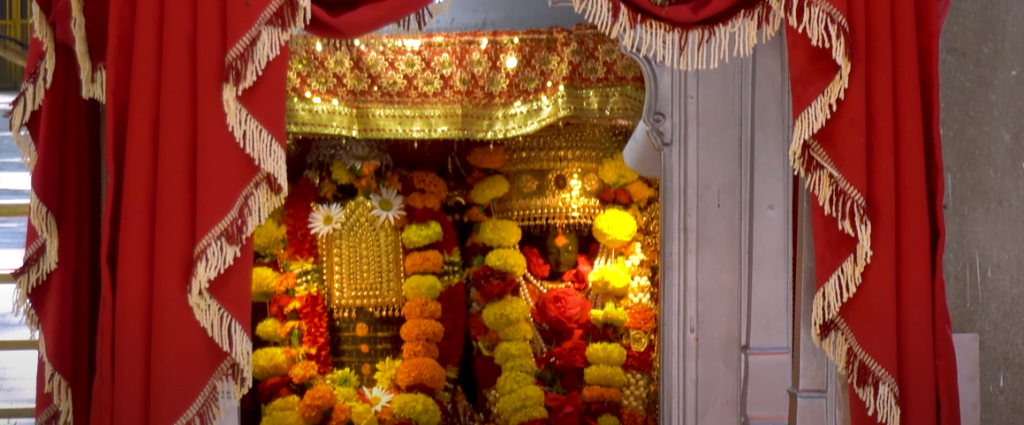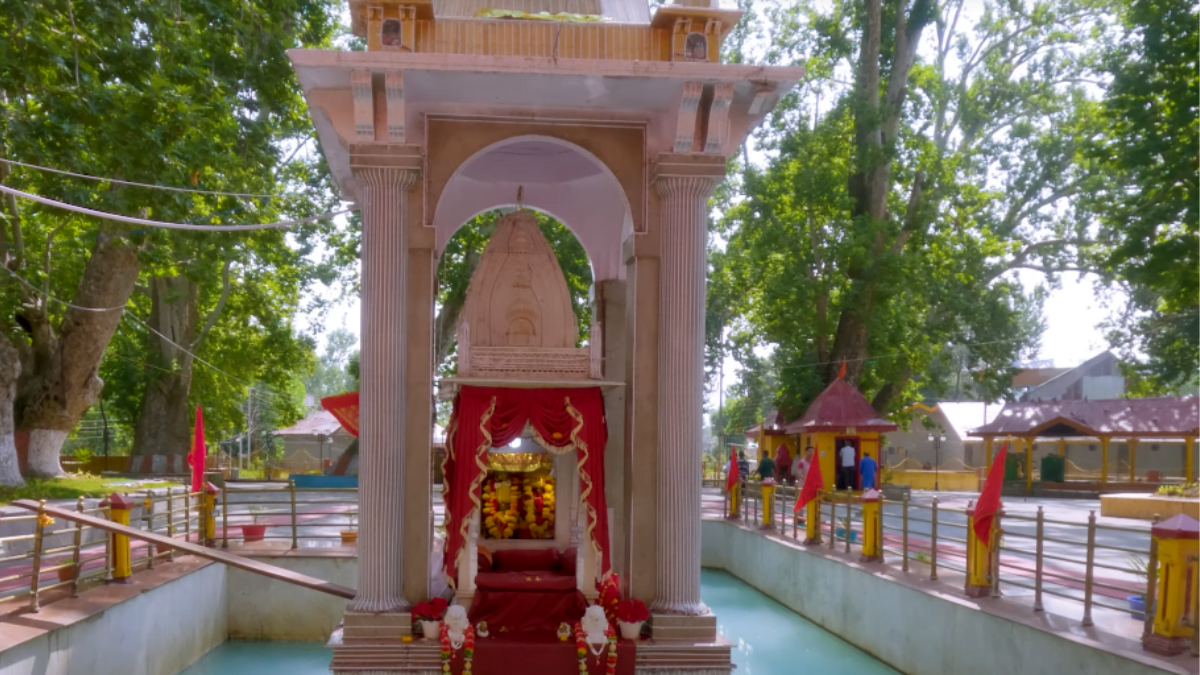Table of Contents
Introduction of Kheer Bhawani Temple:
At a distance of about 30 km from Srinagar, Tulla Mulla village, is home to the Hindu shrine known as Kheer Bhawani temple. The temple honors Goddess Ragnya Devi, a manifestation of Goddess Parvati, and is situated atop a hallowed spring. The primary offering to the goddess at the temple is the well-known Indian dessert Kheer. The goddess’ idol is housed in a modest marble shrine within the temple, which also features a hexagonal spring. Devotees worship Goddess Ragnya, who is represented as a naturally occurring hexagonal spring. Because devotees offer Kheer to the sacred spring, the temple is also known as Kheer Bhawani Temple.
History of Kheer Bhawani Temple:
According to Hindu mythology, the image of Kheer Bhawani was formerly set up in Sri Lanka by the demon king Ravana. This happened when Ravana was blessed for his devotion by Maharagnya. Enraged by Ravana’s unrighteous ways of life, the goddess exclaimed to Lord Hanuman to transport this image to Tulla Mulla, where it now stays.
According to legends, Lord Rama worshipped the goddess during his exile before being transported by Lord Hanuman. He expressed his desire to shift the holy seat to Tulla Mulla, which was fulfilled by Lord Hanuman. The temple was shifted to its present site after the goddess appeared in the dream of a local pundit named Rugnath Gadroo.

Specialty of Kheer Bhawani Temple:
The architecture of the temple is simple yet beautifully created using smooth grey stones. The main platform of the Kheer Bhawani Temple is built amidst a pond. This structure hosts a marble platform on which the idol of the goddess is placed in the sanctum sanctorum. It is bracketed by four stone pillar-like structures that roof the statue.
There is also a holy spring flowing from the western end of the temple, which is known to change its color with various shades of red, pink, orange, green, blue, and white. If the color changes to black, it is considered a bad omen that would result in a disaster in the valley. When black or darkish, it is believed to be an indication of inauspicious times for Kashmir.
In 1886, Walter Lawrence, a contemporary British settlement commissioner for land, during his visit to the spring, reported the water of the spring to have a violet tinge. There are separate bathing pools for ladies and gents, wherein people take a bath or sprinkle the water over their face, hands and feet before paying homage to the residing Ragnya Bhawani Mata. It is considered to be auspicious, and many believe that by doing so the goddess takes away all their worries.
Festival celebration at Kheer Bhawani Temple:
An annual festival is celebrated by the temple in the month of Jyeshtha as per the Hindu calendar on the occasion of Shukla Paksha Ashtami. On this particular day, devotees observe a fast and gather at the temple to pay their homage to the Goddess. Likewise, Jesht Ashtami is another occasion, when people come from and near to have a glimpse of the Goddess. It is said that on this day, on Ashad Ashtami of the Hindu calendar, the spring changes its color with the blessings of the Goddess. The festival is concluded with ‘Maha Yagna’ to please Ragnya Devi.
It is that time of the year when Kashmiri Pandits across the globe exchange ‘Zyeth Astham’ greetings with each other. The first thing in the morning on this special day happens to be ‘Zyeth Astham Mubarak! Also known as Jyeshtha Ashtami, this auspicious day is the eighth day of the bright half of Jyeshtha (generally falls in the English Calendar May–June) month. Every year, the date varies depending on the Hindu calendar.
Sometimes the gathering crosses a lakh at the temple. The grand affair, also known as Kheer Bhawani Mela has many devotees visiting the temple and taking blessings of the presiding goddess. Inside the huge temple premises, there are small temples/idols of other gods such as Lord Shiva, Ganesha and Goddess Parvati Mata as well.
After that, one walks directly towards the inner temple of the goddess which is beautifully situated on an elevated temple platform with spring water across the four boundaries. The main aarti is conducted with devotees lighting clay lamps, burning incense sticks or doop and offering their token of love to the goddess and Lord Shiva in the form of milk, Kheer and flowers, which they offer into the spring.
One takes the havan prasad which usually consists of Dal, Chawal, Dum Aloo and Kheer. Nestled in the shade of mammoth Chinars, Ragnya Devi temple in Tulla Mulla usually receives thousands of devotees, mostly Kashmiri Pandits, on Jyeshtha Ashtami.
Over the decades, the fair has become a symbol of communal harmony as Muslims in the locality of Kheer Bhawani temple make all the arrangements for the devotees, including setting up stalls for flowers and other offerings.
Effect of Terrorist Attack On Kheer Bhawani Temple:
Around 55,000 Pandit families left their ancestral homes in 1990 and migrated to Jammu and other parts of the country when a bloody insurgency broke out in Kashmir in 1989. Before their migration, Pandits used to visit the temple once a month.
On January 25, 1998, when suspected Lashkar-e-Toiba terrorists killed 23 Pandits in nearby Wandhama village, the arrivals of devotees in the subsequent years decreased. However, after 2003, attendance at the festival started increasing with each year.
In recent years, thousands of Kashmiri Pandits, including women and children, have converged at the temple from various far-off places including Delhi and Jammu to offer special prayers on the occasion of the annual holy day.
Current Situation:
About 18,000 Kashmiri Pandits and devotees visited the famous Mata Kheer Bhawani Temple on the auspicious occasion of Jyestha Ashtami this year. Around 2,500 Kashmiri Pandit devotees participated in the evening aarti on this auspicious day. Tight security arrangements were made, and the Lt. Governor himself monitored the entire event as published by PIB Delhi.
How to reach:
To reach Srinagar, there are numerous plane and road transportation options. Jammu and Srinagar are well connected by national highways. There is also a sizable international airport. Regular buses and taxis are convenient ways to go to Kheer Bhawani Temple from Srinagar.

